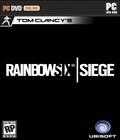Genre: FPS
Publisher: Electronic Arts
Developer: Crytek
Release Date: November 13, 2007
I have to come clean and admit that Crysis is my most anticipated game of the year; few titles captured my attention pre-release the way Crysis had. The game mostly lives up to expectations, and the graphics are every bit as beautiful and I had hoped they would be. The gameplay is not as polished as that of some other marquee titles, but anyone with hardware robust enough to run Crysis should get the game without further delay.
The year is 2019. Shortly after a team of U.S. archeologists makes a startling discovery on the Philippines, the North Korean military moves in, kidnaps the scientists and seals off the area. You're part of an elite U.S. team sent to rescue the scientists and recon the situation, and those who've played the demo know that the discovery involves a malicious alien presence.
Prior to being airdropped into your first assignment, you are outfitted with a high-tech nanosuit that allows you to access a number of handy special abilities through a quick manipulation of the mouse wheel. Maximizing your strength lets you jump to new heights, hold your sniper rifle more steadily, kill enemies with a single punch and throw them several feet into the air. Maximizing your speed will allow you to run quickly for about three seconds, distancing you from your pursuers. A cloaking ability makes you nearly invisible for a brief period, allowing you to sneak across enemy lines. The default suit setting is "maximum armor," which gives you the greatest protection against enemy attacks.
Not surprisingly, the gameplay in Crysis feels most similar to the developer's debut offering, Far Cry, enhanced with the abilities of the nanosuit. Both games share a fondness for outdoor, jungle settings, which is a refreshing change from the repetitive corridors you often find with other first-person shooters. Another common characteristic is the nearly complete freedom of movement you're allowed in completing each level.
There are very few situations where you find yourself wanting to go somewhere beyond the game's invisible map boundaries. If you immerse yourself in the game and play as if the situation were real, you will most likely be permitted to move anywhere you want. For example, when you encounter a pile of debris blocking your path in most other titles, you know from your years of gaming experience that you have reached a dead end and must find another way to your destination. In Crysis, however, you can usually switch your nanosuit to "maximum strength" and jump over the pile, continuing on your way.
Suppose you encounter a Humvee parked along a dirt road. In any other game, you would have little choice but to enter the Humvee and drive it up the road to the next checkpoint. Not so in Crysis. Sure, you can enter the Humvee if you want, but you might have concerns about alerting the enemy to your presence and choose instead to keep a low profile by swimming along the river or engaging your "cloak" ability to tiptoe through the forest without being seen. Having choices like this really add to the title's realism and the replayability.
Crysis is a ton of fun to play, although there are some low points. I marveled at the cavernous interior of the alien hideout, but it was a burdensome chore to find an exit in zero gravity and with almost no ammo. Crysis is a mostly enjoyable romp through the jungle and other locales, but much of the fun to be had is in your ability to take virtually any route you choose.
In my book, the best first-person shooters are those in which the actual shooting experience is a visceral thrill in and of itself. As fantastic a game as Crysis may be, certain shooting idiosyncrasies had a dampening effect for me. Like everything else in the game, the guns look great. They're annoying in their pathetic lack of stopping power, though; either my pistol is shooting peas, or the Korean army has uniforms that provide better armor protection than my nanosuit. You'll often need to empty an entire clip into your enemy's upper chest before he will go down, and even shooting your enemy right between the eyes with a high-powered sniper rifle does not guarantee a kill. Certain enemies can take several direct headshots without going down.
An unfortunate result of the weak weapons is that it's unreasonably difficult to sneak around and take out enemies one by one. Instead, what usually happens is you'll take a shot at the first target and hit him in the chest, at which point he'll become annoyed and call for help. Numerous enemy soldiers will come running to his aid and proceed to wipe the floor with you.
Sometimes, the problem appears to be related more to hit detection than over-armored bad guys. From time to time, you may notice the conspicuous absence of a splash of blood after firing a round directly into your target's face. Or you may notice bullets intended for passengers on a rigid-hull inflatable boat making splashes as they land behind the boat or in front of it, rarely hitting their targets. Maybe the effect is the result of advanced physics, bullet drop or realistic weapon characteristics, but I found it frustrating.
A related annoyance is in how your enemies are ridiculously alert; they are seemingly always gazing in your direction, have perfect vision and rarely miss. When I'm crouched in the shadows, almost completely obscured by dense foliage, I naturally assume that I won't be noticed by enemy soldiers sitting in a boat half a mile away. Immersion suffered when I realized this was not the case. I found myself forced to use the cloaking ability excessively, lest I be spotted by eagle-eyed sharpshooters. It felt unnatural to have to resort to such trickery.
It's been several years since I played Far Cry, but I remember being particularly impressed with the AI. I recall enemies having the most human behaviors of any bad guys I had encountered in a game. Unfortunately, the AI in Crysis fails to meet my (admittedly inflated) expectations.
Let's just say they are not geniuses. At one point, the enemy was alerted to my presence in an area crawling with soldiers, and 10 of them chased me to a watchtower. Desperate, I climbed the ladder, barely surviving as several bullets struck me. Once in the tower, I crouched down and aimed my gun at the top of the ladder, ready to pick off enemies one by one, but not a single enemy came up or tossed a grenade into my hiding place. Instead of fending off a massive attack, I sat in safety, gradually regaining my health, as the idiotic AI below wondered aloud, "Where did he go?" If that weren't ridiculous enough, I then proceeded to practice scoring some headshots with my high-powered sniper rifle. Maybe their hearing isn't as good as their eyesight, for the sound of my repeated gunshots was apparently not enough to clue anyone in as to my whereabouts.
These quibbles aside, Crysis really shines is in the graphics department. The visual splendor of which Crysis is capable (when afforded the opportunity by the right CPU and video card combination) is unmatched by any release to date. In particular, the jungle vistas are breathtaking during sunrise and sunset. The golden sand, the swaying palm trees, the detailed foliage, the realistic shadows and lighting effects — everything is gorgeous and, at times, approaches photorealism. The guns are rendered with remarkable detail, and nice touches abound, like the frost that forms on your weapon during the "frozen" levels. You'd never mistake a scene from Crysis with actual video footage, but it would appear that the technology is getting closer and closer all the time.
The world of Crysis feels genuine, and the design of the single-player levels is impressive. Aliens come in strange shapes and sizes, so they're a good departure from the humanoid, alien-suit wearing poseurs that are so often seen in the sci-fi genre. The nanosuit looks spectacular and has a nice sheen to it, emitting a satisfying futuristic sound when engaged and changing color in a manner that feels appropriate. The chain gun carried by the alien ground troops, while similar to its earthly counterpart in terms of handling and use, looks otherworldly.
Not everything you'll see in the game received as much attention from the designers as the jungle landscapes. With the exception of the cut scenes, buildings and people look bland and generic. For a short time, you play alongside a character named Helena Rosenthal. I couldn't help but be reminded of Alex Vance, my sidekick during much of the Half-Life 2 saga. Rosenthal, however, doesn't hold a candle to Vance when it comes to facial expression, mannerisms and movement.
Physics effects are decent but not as spectacular as those titles supporting Aegia's PhysX accelerator (Crysis doesn't). Thus, effects involving smoke and explosions tend to look on par — but not better — than those you'll see in other current shooters on the market.
Crysis is also a great-sounding game. I loved the howling wind in my ears upon stepping into a snowstorm, and I was alarmed by the distant-yet-loud howling noise made by the aliens. The sound of the various critters that inhabit Crysis also added to the immersion. One sound effect that probably could have used a little tweaking involves the aforementioned Rosenthal character. She doesn't realize that you're standing directly in front of her, so she shouts her instructions to you as if you were standing on the other end of the room. I would have preferred if she had lowered the volume of her voice to a more natural level in light of my proximity.
Performance considerations should play a large factor in anyone's decision to purchase this title. Crysis ships with its own benchmarking tool. If you don't know what that is, it's a pretty safe bet that your computer is not fast enough to run this game without having to minimize the graphics settings.
If you're reading this, your attention has undoubtedly been grabbed by the ubiquitous gorgeous screenshots that have been posted here and elsewhere. What you must understand is that:
- you will need Vista to run the game at its maximum visual settings, and
- although you can play the game at its second-highest settings with XP (as I have done), you will need a very fast computer to get smooth frame rates.
If you haven't upgraded your computer in the past 12 months, you're probably not going to have the same experience playing Crysis as is suggested by the screenshots.
I played with a quad-core processor and a single, slightly overclocked 8800 GTX, and I typically saw frame rates of about 27 frames per second, with graphics set to high. The game naturally slowed down for me during some of the more intense battle sequences, but remained playable. If your gaming rig is not outfitted with this kind of hardware, you may wish to spend your free time playing Call of Duty 4: Modern Warfare — a game with near-equivalent graphics but a fraction of the performance hit — until your next upgrade.
Crysis includes a full-featured multiplayer component, too, although relatively few people seem to be playing it online. As of this writing, there are only about 1,000 people playing around the world. By comparison, over 25,000 people are playing Call of Duty 4 and 120,000 are playing Counter-Strike. Presumably more people will get online after they've had a chance to upgrade their computers, but for now, you should assume you're buying Crysis for the single-player experience.
There are worse decisions you could make. Crysis has long been touted as the new standard-bearer among visually compelling shooters, and in that regard, Crysis does not disappoint. When you throw in a nanosuit, nonlinear freedom of movement and an exciting story, Crysis is as good a reason as any to upgrade your computer.
Score: 8.8/10
More articles about Crysis










 Shooter fans will face a new kind of gameplay challenge requiring adaptive tactics and customization of weapons and armor in dynamic, hostile environments as mankind struggles to survive in the face of a horrific alien invasion.
Shooter fans will face a new kind of gameplay challenge requiring adaptive tactics and customization of weapons and armor in dynamic, hostile environments as mankind struggles to survive in the face of a horrific alien invasion.



























































